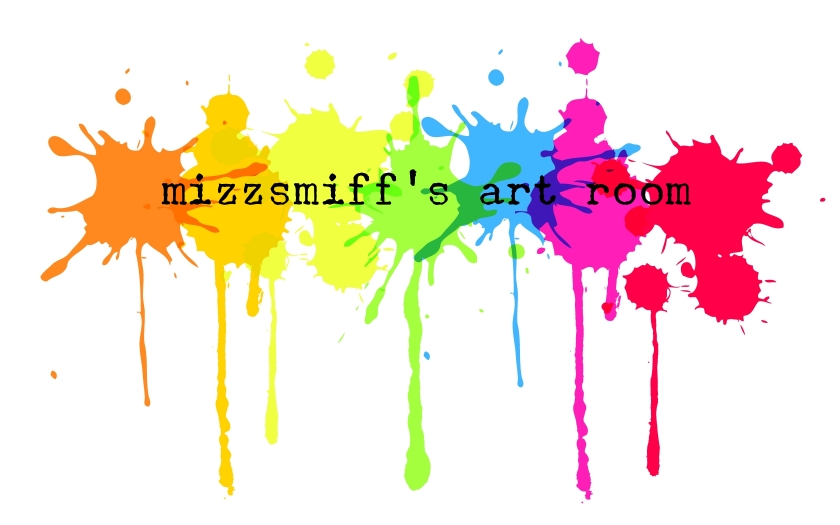Grading is my least favorite part of my job. Art is so subjective, however I try to be as objective as I possibly can be when it comes to assigning grades to the projects that my students turn in.
Today marks the last day of the First Quarter of the 2015-2016 school year. The last 4 days of the quarter have been used as "Ketchup Days". Students have the opportunity to use class time to finish any projects that they may not have completed. It is up to students to get their work done and to use their time wisely. I conference with each student, showing them their grade for the quarter and give them the opportunity to complete or redo projects.
In my classroom, I have visual reminders of the expectations for the level of craftsmanship for middle school students so that there is no question about what is expected from them at this point in their school career.
 |
| This rubric is on my door and is an example of the expectations for craftsmanship and coloring. Often, I will redirect students to the rubric when they turn in a project so that they can self-assess. |
 |
This second image is on my front board (in a different direction!) and shows the expectations for different media. I want to make sure that students have absolutely no question as to what is expected of them.
| I also use a modified rubric fashioned from the Studio Habits of Mind. This outlines expectations in the Art Room (studio) and demonstrates to students that they need to participate in taking care of the classroom and materials, not giving up when learning a new skill and learning to think like an artist. |
Studio Habits
Craftsmanship
A (90-100)
B (80-89)
C (70-79)
D (60-69)
Learning to use materials and tools correctly and caring for your space and the art room.
Art materials were cared for and returned to where they belong in excellent condition.
Space was clean and ready for the next class.
Art work was neat
Art materials were cared for and returned to where they belong in good condition.
Space was clean and ready for the next class.
Art work was neat with few extra marks or mistakes.
Art materials somewhat cared for and returned to where they belong in fair condition.
Space was not left as clean and neat as it could be.
Some of my work was sloppy.
Art materials were not cared for and not returned to where they belong.
Space was left messy.
Art work was sloppy and evident that time and care was not taken.
Engaging and Persisting
A (90-100)
B (80-89)
C (70-79)
D (60-69)
Learning to work through problems, to develop focus and perseverance at art tasks.
Artwork was complete. The artist took his time and was thoughtful about the process.
Artwork is mostly complete and the artist worked hard.
Artwork is still in beginning phase or it is evident that artist has rushed through the project to complete it.
Artwork is not complete or was rushed through with little to no regard to technique or process.
Envisioning and Expressing
A (90-100)
B (80-89)
C (70-79)
D (60-69)
Learning to imagine and brainstorm. Thinking outside the box.
Artist came up with more than one idea and chose the one that was the most unique.
Artwork is clearly thought out.
Artist came up with one idea that was somewhat original but many components were copied.
Artwork was not original. Artist put little thought or effort into coming up with a new idea.
Artwork was copied and the artist put no effort into being original.
Craftsmanship
|
A (90-100)
|
B (80-89)
|
C (70-79)
|
D (60-69)
|
Learning to use materials and tools correctly and caring for your space and the art room.
|
Art materials were cared for and returned to where they belong in excellent condition.
Space was clean and ready for the next class.
Art work was neat
|
Art materials were cared for and returned to where they belong in good condition.
Space was clean and ready for the next class.
Art work was neat with few extra marks or mistakes.
|
Art materials somewhat cared for and returned to where they belong in fair condition.
Space was not left as clean and neat as it could be.
Some of my work was sloppy.
|
Art materials were not cared for and not returned to where they belong.
Space was left messy.
Art work was sloppy and evident that time and care was not taken.
|
Engaging and Persisting
|
A (90-100)
|
B (80-89)
|
C (70-79)
|
D (60-69)
|
Learning to work through problems, to develop focus and perseverance at art tasks.
|
Artwork was complete. The artist took his time and was thoughtful about the process.
|
Artwork is mostly complete and the artist worked hard.
|
Artwork is still in beginning phase or it is evident that artist has rushed through the project to complete it.
|
Artwork is not complete or was rushed through with little to no regard to technique or process.
|
Envisioning and Expressing
|
A (90-100)
|
B (80-89)
|
C (70-79)
|
D (60-69)
|
Learning to imagine and brainstorm. Thinking outside the box.
|
Artist came up with more than one idea and chose the one that was the most unique.
Artwork is clearly thought out.
|
Artist came up with one idea that was somewhat original but many components were copied.
|
Artwork was not original. Artist put little thought or effort into coming up with a new idea.
|
Artwork was copied and the artist put no effort into being original.
|
